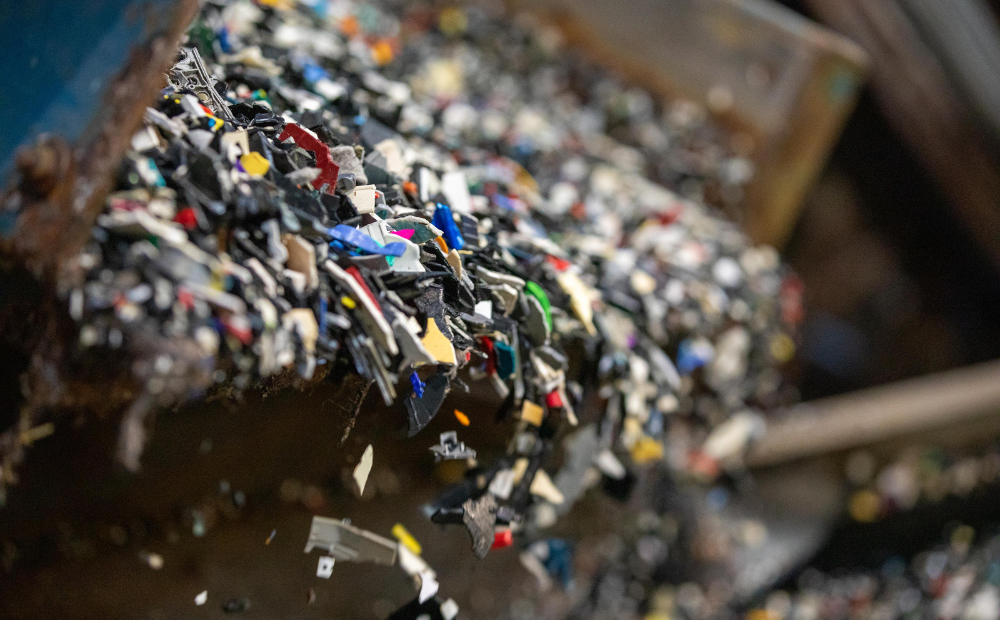Where does producer responsibility end?

Ever-increasing recycling fees, removal of the turnover threshold and responsibility for cleaning SUP products. These are just some examples of the consequences of producer responsibility in recent years. And there is more to come.
Under the Waste Act, companies are responsible for arranging the recycling and waste management of their products at their own expense. The aim of producer responsibility is to prevent waste generation and litter in the environment as well as to promote reuse.
The producer responsibility scheme has proven to be an effective form of environmental regulation, and it has been extended to new product groups over the years. In addition to packaging, producer responsibility obligations currently cover electrical and electronic equipment, batteries and accumulators, vehicles, tyres, paper and paper products, as well as many products made of plastic.
This list will soon become longer: producer responsibility for paper is set to be extended to books, the amendment to the Waste Framework Directive will likely include textiles in the next few years and the reform of the Urban Waste Water Treatment Directive will include pharmaceuticals and cosmetics, while the End of Life Vehicles Directive will extend producer responsibility to cover buses, trucks and motorcycles.
Many new sectors are involved in the discussions
The success of the producer responsibility system has encouraged the European Commission to consider new product groups and industries that could be included under the scheme. Construction and demolition waste as well as food waste have been hot topics recently. These waste streams are huge, and their recycling rates are low.
Individual countries have also introduced new producer responsibility programmes. For example, the mandatory producer responsibility scheme covers cooking oils in Italy and Spain and clothes and furniture in France. France also extended producer responsibility to apply to toys and sports equipment in 2022. The same is true in Korea, where, in addition to the above-mentioned products, the producer responsibility scheme now includes kitchen utensils and disposable nappies. The Netherlands will also extend producer responsibility to nappies in 2024.
Construction waste scrutinised
The construction industry is known to have a huge material and energy footprint. The OECD predicts that the use of building materials will double globally between 2017 and 2060. The construction industry generates approximately 30% of all solid waste across the world. Most construction and demolition waste is currently dumped in landfill sites or is only partially recycled. One reason for this is that it is difficult to separate individual materials when demolishing buildings. According to the trade association for Europe’s flat glass sector, glass material would be easy to recycle, but it ends up in landfill or is incinerated as it is usually mixed with other building materials.
Construction waste will probably soon come under the producer responsibility system. Some Member States have already introduced producer responsibility schemes for building materials that aim to increase the recovery of materials on construction sites. Vlakglass Recycling in the Netherlands, for example, collects approximately EUR 1.6 million in recycling fees every year to fund the recycling of glass from buildings. The Netherlands banned the disposal of construction and demolition waste in landfill sites as early as 1997 and achieved a recycling rate of almost 100% by 2010.

The construction industry produces around 30% of all solid waste across the world. Most of the waste ends up in landfill sites or is only partially recycled.
Collection is working, recycling not so much
The problem with new producer responsibility sectors is that too little of the material collected for recycling ends up as raw material for new products, for example there are very few recycling plants for nappies in Europe. The combined recycling capacity of the UK, Italy and the Netherlands is only 0.36 megatons. Most of this recycled raw material is turned into cat litter or used for building foundations. The same applies to construction and demolition waste, which is primarily used for low-value applications, such as foundations for roads.
There has not been much improvement in the management of textile waste streams either. In the UK, for example, textile waste management costs almost GBP 100 million a year. A separate collection system is necessary to ensure that textiles disposed of by consumers retain their value. However, on average only 30% of textiles go to separate collection. In Germany, this figure exceeds 75%.
Producer responsibility is not suitable for every sector
The enthusiasm for extending producer responsibility has sparked a debate about its limits. Recent studies suggest that it is not a suitable regulation tool for all sectors. It can justifiably be argued that for certain product groups, producers have special expertise in collecting end-of-life products and improving product design. In these sectors, producer responsibility can generate not only funding but also added value.
Producers that have their own retail premises, such as clothes shops and paint shops, can offer consumers a collection service for their old products. The same seems to apply to producer responsibility that covers products used by businesses. For example, the production of construction and demolition waste as well as food waste from commercial kitchens have both been reduced.
Studies show, however, that producer responsibility is not an effective method for regulating products that are often discarded into the environment due to consumer behaviour. Such products include fishing gear and tobacco products. When it comes to reducing litter related to smoking, other forms of regulation, such as fines, information campaigns and restrictions on use, have proven more effective.
Risk of overlapping systems
Some producer responsibility schemes oblige producers to manage waste streams in addition to covering the costs. It is argued that this results in producers using their expertise and supply chain networks to organise the collection and recovery of materials more efficiently or designing their products to be easier to recycle. But this is not true for all industries. Producers such as clothes manufacturers can rarely influence the entire life cycle of their products. Many researchers believe that earmarked taxes or levies on textiles would be a simpler and more effective method of regulation than producer responsibility.
Researchers also warn against building overlapping systems. One example is biowaste and textiles. The EU will require Member States to implement separate collection for biowaste by 2024 at the latest and for textiles by 2025. In its report, the OECD asks how the producer responsibility system will benefit these sectors. In terms of textiles, the plans to switch to a producer responsibility system have reduced the incentives for municipal waste management companies to invest in a separate collection and reuse scheme for end-of-life textiles from consumers. Kai Mykkänen, Finnish Minister of Climate and the Environment, also addressed this problem.
How to get the market for recycled materials working
Producer responsibility has already been around for 30 years, but there is still much scope to improve the system, including in product groups for which it has an established role. Measures to prevent free-riding still need to be stepped up and are becoming increasingly important, especially with regard to packaging, as the growth of cross-border ecommerce continues. Similarly, there is still much work to be done to harmonise systems and increase cooperation between Member States. This is also the case with the transparency of information on waste streams and the recycling system as a whole. Most importantly, the market for recycled materials must be made to work. Circular economy will not become a reality if there is no demand for recycled materials.
This is how producer responsibility works
Companies with producer responsibility (producers) pay recycling fees to a producer organisation within their industry. The producer organisation uses these fees to organise the collection and recycling of products and other statutory obligations. The producer reports the volumes of products it places on the market to the producer organisations, which, in turn, report the data to the authorities. The authorities compile Finland’s recycling statistics and submit them to the European Commission.
Areas currently covered by the producer responsibility system
- Packaging
- Electrical and electronic equipment
- Batteries and accumulators
- Vehicles
- Tyres
- Paper and paper products
- Many plastic products (SUP products)
Areas that will come under the producer responsibility system in the future
- Books
- Textiles
- Pharmaceuticals
- Cosmetics
- Food waste?
Sources: OECD: New aspects of EPR, The European Environment Agency, Delphi: Future perspectives on the role of extended producer responsibility within a circular economy